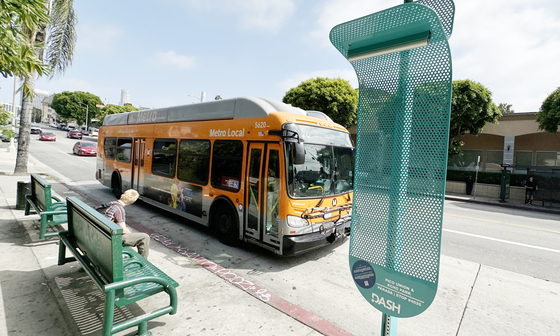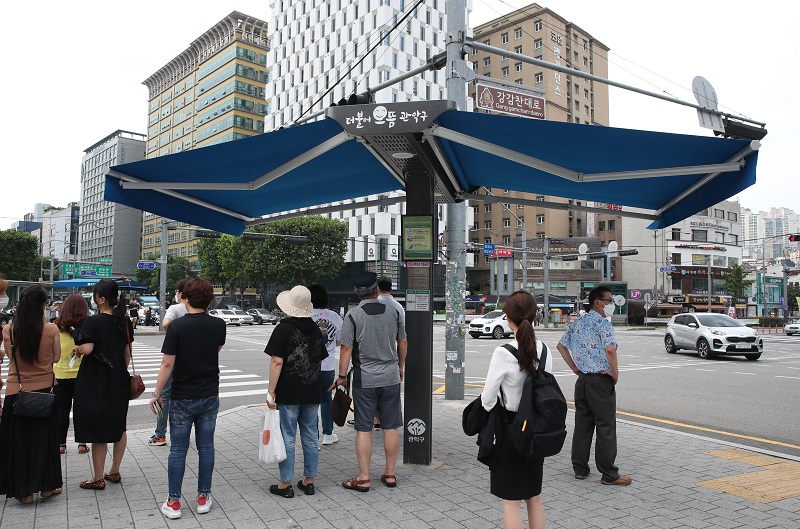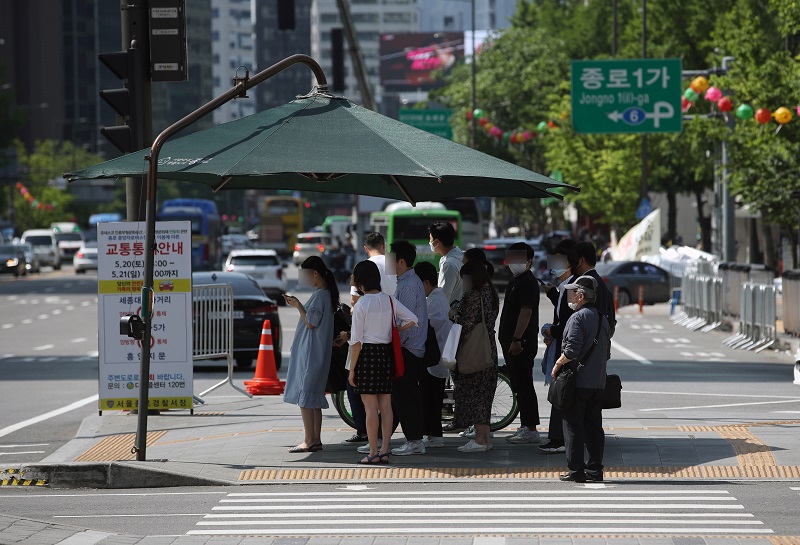Good morning! It’s Tuesday, May 30, and we have returned to work after Memorial Day, which was the first post-pandemic holiday on Monday. On May 18, the Los Angeles Department of Transportation (LADOT) unveiled a new bus stop shade design named ‘La Sombrita,’ which means ‘the shade’ in Spanish. However, despite its name, the device provides only minimal shade and is barely sufficient for one person. LADOT explained that traditional bus stop shelters are too expensive and cannot be installed due to limited sidewalk space. If limited space and budget are concerns, it would be worthwhile to consider shade-creating canopies used in Seoul, South Korea.

Last year, the Los Angeles Department of Transportation (LADOT) reported that only a quarter of the county’s 12,200 bus stops had some form of shade or sun protection.
The Korea Daily also highlighted the lack of shady spots at bus stops in L.A. Koreatown and called for improvement through our ‘Senior Mobility Rights’ series last year.
On May 18, LADOT unveiled a new bus stop shade design named “La Sombrita,” which means “the shade” in Spanish.
Despite its name, the device is barely sufficient for one person. The steel structure is also perforated with holes that fail to block the wind, and the lighting at the top is too small to illuminate the surrounding area.
Mainstream media outlets, such as ABC News, criticized it as “a structure that doesn’t provide any shade.”
Surprisingly, these small shields reportedly cost between $7,500 and $10,000 each.
As part of a pilot program, LADOT has installed these structures at four locations: Westlake, Watts, Panorama City, and Boyle Heights. At least $30,000 has already been spent, with the overall budget for the pilot program set at $200,000.
In response to the criticism, LADOT and Kounkuey Design Initiative (KDI), the company behind La Sombrita’s design, defended it on Twitter, stating that the structure was “designed to get to work fast within the current policy landscape.”
“Typical bus shelters often cost $50k or more and require coordination among 8 departments,” tweeted KDI. “But La Sombrita (in its most expensive prototype form) costs approximately 15% of the price of a typical bus shelter and can be installed in 30 minutes or less.”
While some dismissed LADOT and KDI’s justifications, they acknowledged that structural problems within the city government contributed to the flawed design.
This has led to calls for structural reforms to enhance government capacity by streamlining processes, centralizing decision-making, and utilizing off-the-shelf designs.
LADOT explained on Twitter that conventional bus stop shelters are prohibitively expensive and impossible to be installed due to limited sidewalk space. The message received over 200 criticisms, further fueling the debate.
Even considering these limitations, the design of La Sombrita has been heavily criticized for lacking common sense.
If tight space and budget are issues, it would be worthwhile to consider shade-creating canopies(see the photos) used in Seoul, South Korea.
These structures, modified versions of parasols, are not expensive to make and can be installed in tight spaces —and are more aesthetically pleasing.



![Son Heung-min to LAFC? Tottenham Star Nears MLS Move Tottenham Hotspur and Korea national team captain Son Heung-min is pictured on March 20. [YONHAP]](https://www.koreadailyus.com/wp-content/uploads/2025/05/0516-SonHeungmin-100x70.jpg)

![‘Squid Game’ S3 Breaks Netflix Record Despite Mixed Reviews A still from the third and final season of Netflix's series ″Squid Game″ (2021-2025) [NETFLIX]](https://www.koreadailyus.com/wp-content/uploads/2025/06/0630-SquidGame-100x70.jpg)
